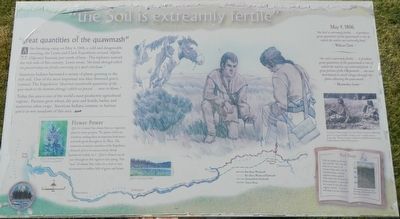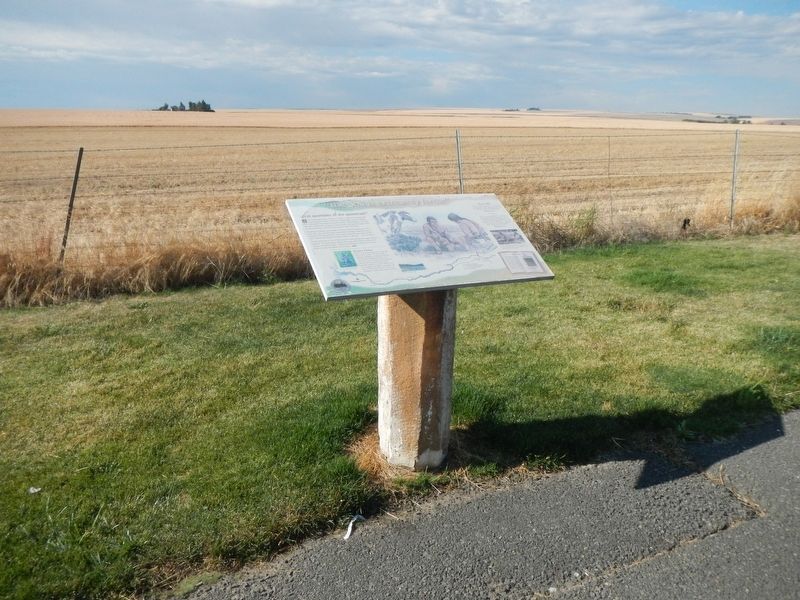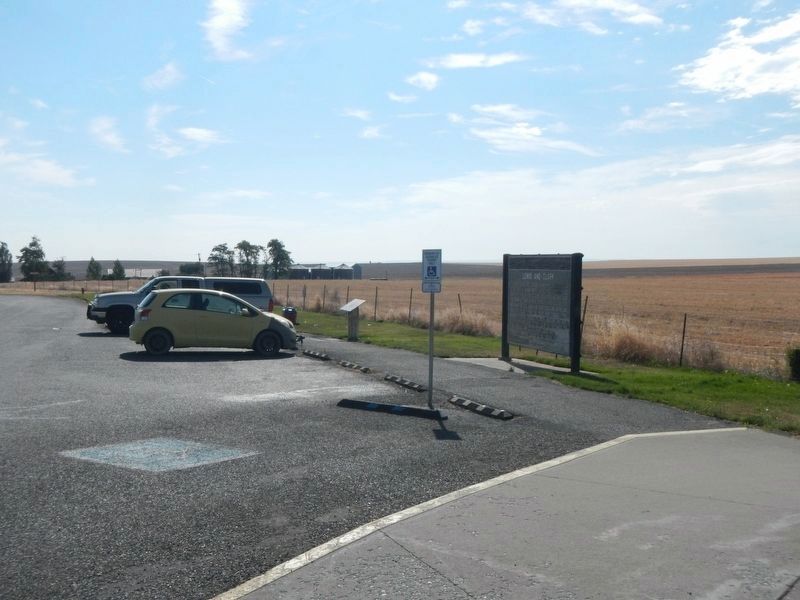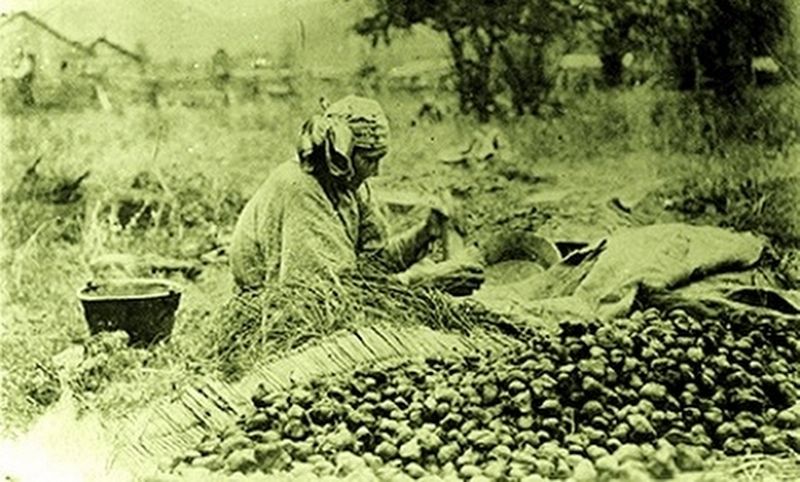Near Pomeroy in Garfield County, Washington — The American West (Northwest)
"the Soil is extreamly fertile"
After breaking camp on May 4, 1806, a cold and disagreeable morning, the Lewis and Clark Expedition crossed 'Alpáha (Alpowa) Summit, just north of here. The explorers noticed the rich soil of this country. Lewis wrote, "the lands through which we passed today are fertile consisting of a dark rich loam."
American Indians harvested a variety of plant growing in the rich soil, One of the most important was blue-flowered qém'es (camas). The Expedition "observed considerable quantities of the qua-mash in the bottom through which we passed...now in blume."
Today, this area is one of the world's most productive agricultural regions. Farmers grow wheat, dry peas and lentils, barley, and numerous other crops. American Indians continue to harvest qém'es in wet meadows of this area.
Flower Power
Qém'es (Camas) has always been an important plant to native peoples. The plant's bulbs are nutritious, making them an important food source and trade good throughout the West. On numerous occasions, members of the Expedition obtained qém'es in various forms (dried, powdered, boiled, etc.). Qém'es flowers can be seen throughout this region in late spring. Vast "seas" of vibrant blue color are a treat to eyes accustomed to endless hills of green and brown.
May 4, 1806
"the Soil is extreamly fertile...it produces great qualities of qualmish a root of which the natives are extremely fond." ~ William Clark ~
"the soil is extreemly fertile... it produces great quantities of the qualmish a root of which the natives are extreemly fond. a great portion of the Chopunnish...are now distributed in small villages through this plain collecting the qualmish...." ~ Meriwether Lewis ~
Soil Study
Soils are made up of sand, clay, and silt. You can tell what is in the soil by its texture. Soils with a lot of clay feel sticky and stay together when packed. Soils with a lot of sand feel loose and gritty. Loam soils are a mix of clay, silt and organic matter. Can you tell what is in the soil here.
Erected by Lewis & Clark Expedition - Washington.
Topics. This historical marker is listed in these topic lists: Agriculture • Exploration • Natural Resources. A significant historical date for this entry is May 4, 1806.
Location. 46° 26.139′ N, 117° 25.451′ W. Marker is near Pomeroy, Washington, in Garfield County. Marker is on U.S. 12 at milepost 414 near Sweeney Gulch Road, on the right when traveling east. The marker is located at Alpowa Summit Rest Area. Touch for map. Marker is in this post office area: Pomeroy WA 99347, United States of America. Touch for directions.
Other nearby markers. At least 4 other markers are within 9 miles of this marker, measured as the crow flies. Lewis and Clark Expedition (here, next to this marker); Ancient Crossroads (approx. 3.3 miles away); Lewis & Clark Historic Trail (approx. 7.6 miles away); Garfield County GAR Monument (approx. 8.8 miles away).
More about this marker. Duplicate markers are located at the rest area on the opposite side of the highway.
Also see . . .
1. Camas (plant) - Discovering Lewis & Clark. At Weippe Prairie on June 11, 1806, while waiting for the snow to melt on the high ridges of the Bitterroot Range, Lewis found time to write one of the longest, most detailed descriptions of any of the plant specimens he collected. (Submitted on November 4, 2020, by Barry Swackhamer of Brentwood, California.)
2. The ethnobotany of Camas Lily -- Beautiful Oregon Photography. While the earliest evidence of human occupation of the Willamette Valley dates back to between 11,500 and 10,000 years before present (B.P.); the first known instance of bulk-processed camas lily occurs around 7750 to 6830 B.P. at the Hannavan Creek site near present day Fern Ridge Reservoir.
Here near the Long Tom river, hundreds of intact, charcoalized camas bulbs were retrieved from the first known example of a stone hearth used to cook the bulbs. (Submitted on November 4, 2020, by Barry Swackhamer of Brentwood, California.)
Additional keywords. Camas
Credits. This page was last revised on November 5, 2020. It was originally submitted on November 4, 2020, by Barry Swackhamer of Brentwood, California. This page has been viewed 109 times since then and 10 times this year. Photos: 1, 2, 3, 4, 5. submitted on November 4, 2020, by Barry Swackhamer of Brentwood, California.




